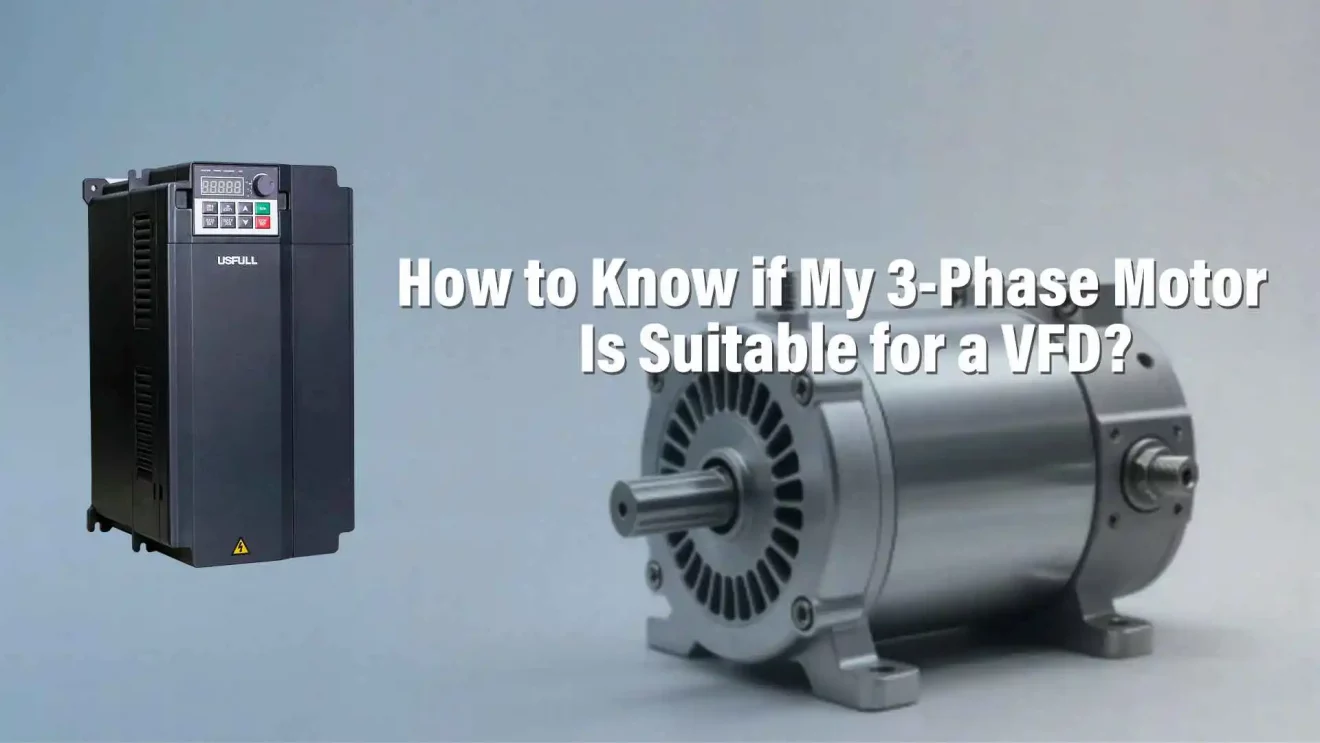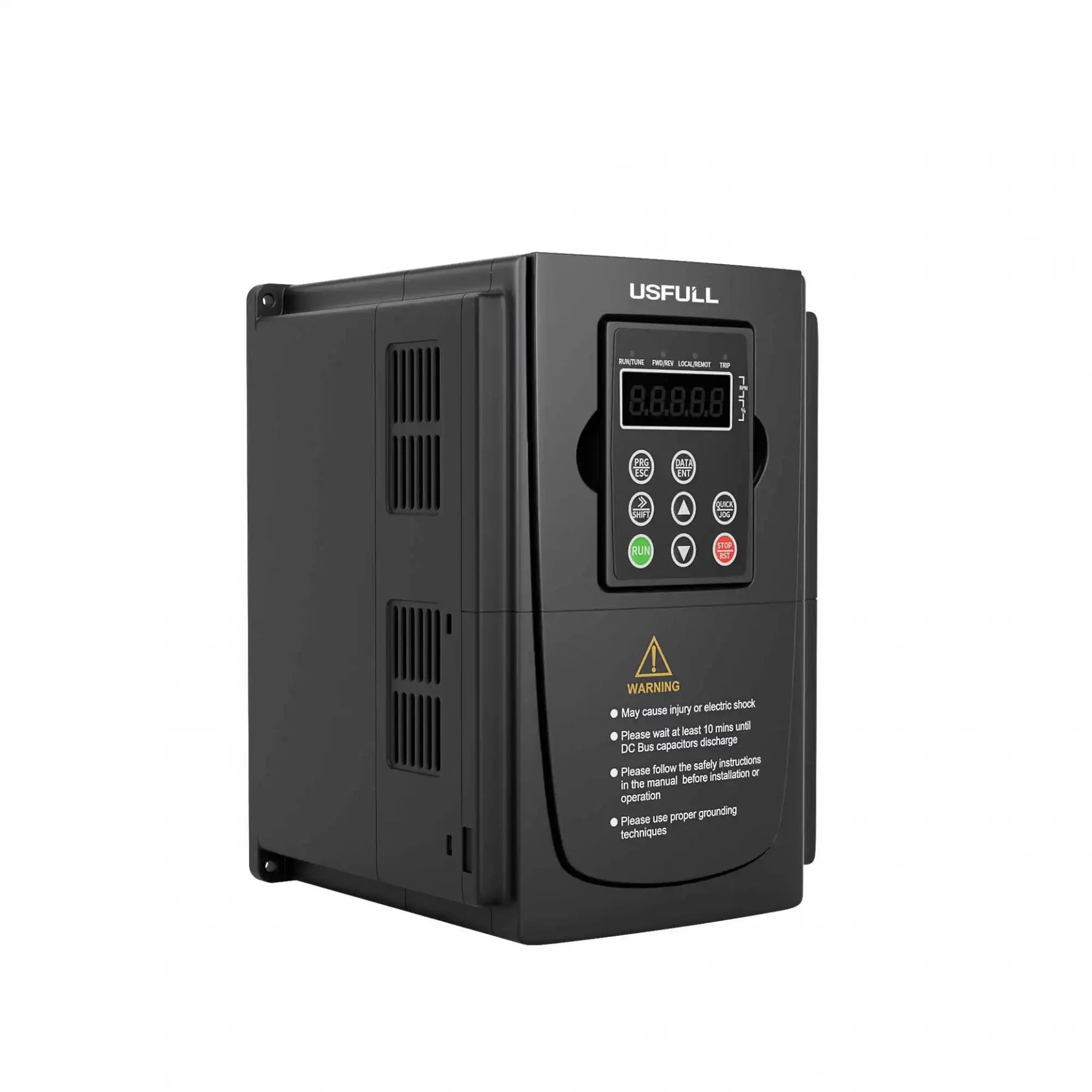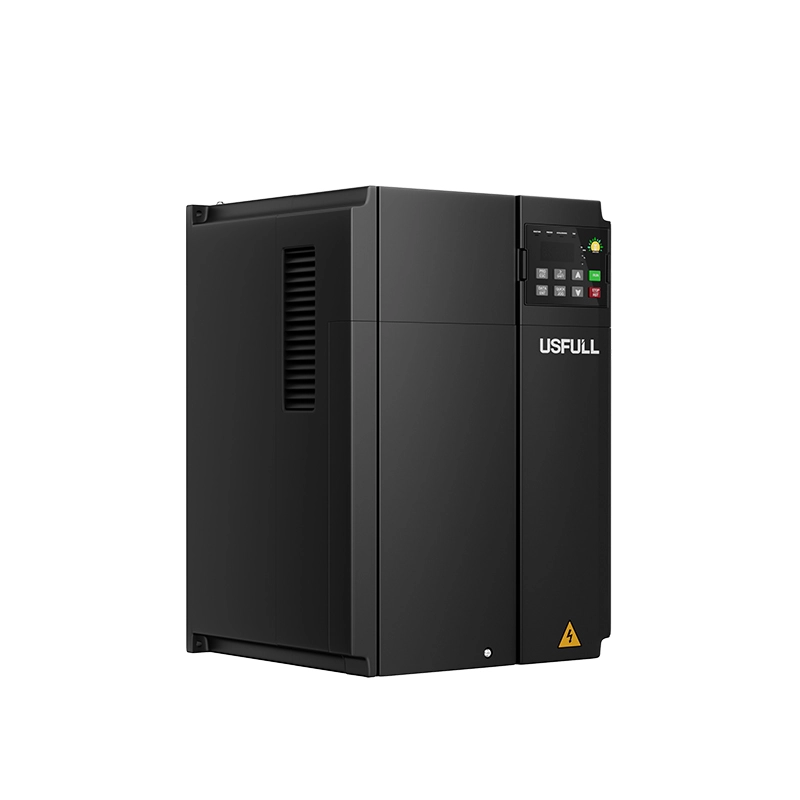When your irrigation season is coming or your production line is expanding, the last thing you want is a burnt-out motor caused by an incompatible VFD. Choosing the wrong setup risks costly downtime, overheating, and motor failure. The solution? Ensure your 3-phase motor is VFD-compatible before installation.
To know if your 3-phase motor is suitable for a Variable Frequency Drive (VFD), check if it’s labeled “inverter-duty,” review its insulation class, and verify thermal protection. A properly matched motor will handle voltage spikes, maintain cooling, and deliver long-term performance. Always consult your VFD manufacturer or supplier for technical matching.
Still unsure if your motor and VFD setup is safe? Let’s walk through the details and protect your investment.
How Do You Tell if a Motor Will Work with a VFD?
The first and most critical step is examining the motor’s nameplate et technical documentation. Motors compatible with VFDs—also known as Entraînements à vitesse variable (VSD) ou convertisseurs de fréquence—are typically labeled as “inverter-duty”, “VFD-rated”, or “suitable for variable frequency operation.”
Here’s what to look for:
Inverter-Duty Labeling: Motors labeled “inverter-duty” are specially designed for VFD operation, with enhanced insulation and cooling systems.
Insulation Class: Motors with Class F or H insulation are better equipped to handle the higher voltage spikes generated by inverter VFDs.
Thermal Protection: Integrated devices like thermistors ou thermal switches help the motor monitor and control heat buildup, especially at low speeds.
Voltage and Frequency Tolerance: Confirm the motor’s rated voltage and frequency range matches the VFD’s output profile.
If any of these elements are missing, the motor may still work with a VFD—but with increased risk of early failure. To be safe, consult with a Fabricant de VFD ou Fournisseur de VFD for compatibility checks.
| Table: Indicators of VFD-Compatible Motors | |
| Indicator | Description |
| Inverter-Duty Label | Motor is designed for VFD applications |
| High Insulation Class | Better insulation to handle voltage spikes |
| Thermal Protection | Sensors to monitor and manage motor heat |
| Manufacturer Approval | Confirmation from manufacturer on compatibility |
Are All 3-Phase Motors Compatible with VFD?
Not all 3-phase motors are created equal. While most industrial 3-phase motors can technically be connected to a convertisseur de fréquence, standard motors may not be optimized for VFD use. This distinction is crucial.
What Can Go Wrong:
Insulation Breakdown: Standard motors often have insulation systems that can’t handle high-frequency switching from VFDs.
Inadequate Cooling: Most standard motors have internal fans linked to motor speed. When speed drops, so does airflow—leading to overheating.
Bearing Damage: Without bearing protection, stray shaft currents generated by inverter VFDs can cause fluting and early bearing wear.
Key Differences:
| Feature | Standard Motor | Inverter-Duty Motor |
| Insulation Strength | Lower | Higher |
| Cooling at Low Speeds | Less Efficient | More Efficient |
| Voltage Spike Tolerance | Low | High |
| Bearing Protection | None | Often Included |
To minimize long-term risks and service costs, always choose an inverter-duty motor from trusted Fabricants de VFD en Chine or globally.
How to Size a VFD for a 3-Phase Motor?
Sizing your Entraînement à fréquence variable correctly is just as important as ensuring motor compatibility. Undersizing or oversizing a VFD can cause performance inefficiencies, tripping, or even equipment damage.
Step-by-Step Guide:
Match the Voltage: Ensure both the motor and VFD have the same voltage rating (e.g., 380V, 460V, etc.).
Check the Motor’s Full Load Amps (FLA): The VFD must have an output current equal to or greater than the motor’s rated amperage.
Align the Power Rating (HP or kW): Always match or slightly exceed the motor’s power rating with the VFD.
Consider Load Type: High-inertia loads like pumps or conveyors may require a Entraînement à vitesse variable with a higher overload capacity.
Factor in Environment: For high-altitude or high-temperature locations, derate the VFD accordingly.
For specialized setups like solar pumping, consult your Fournisseur de VFD to factor in dynamic loads, soft start requirements, and protection circuits.
| Spécifications | Moteur | ^da |
| Tension | 460V | 460V |
| Puissance | 10 HP | ≥10 HP |
| Full Load Amps (FLA) | 14 Amps | ≥14 Amps |
| Capacité de surcharge | N/A | As Required |
Can Any Motor Go on a VFD?
Technically, yes—but should you? No. Not every motor is designed to endure the electrical and thermal stresses introduced by a VFD. Running a non-compatible motor on a convertisseur à fréquence variable can create long-term damage even if it works in the short term.
Common Risks:
Voltage Spikes: Can degrade insulation and cause shorts.
Reduced Cooling: Especially at low speeds, standard motors overheat due to reduced fan speed.
Bearing Failures: VFDs can introduce harmful shaft currents.
Risk Mitigation Tips:
Install Line Reactors or Output Filters: These devices reduce voltage stress and harmonics.
Use External Cooling: Maintain airflow with independent cooling fans.
Install Bearing Protection: Add shaft grounding rings ou insulated bearings.
That said, if the application is critical or continuous, always use an inverter-duty motor. Work with an experienced Fabricant de VFD en Chine comme PLEIN AIR to ensure your entire system is harmonized.
Final Words from a VFD Manufacturer
As a professional VFD manufacturer and supplier with over 90 export markets, PLEIN AIR has seen countless clients—from agricultural users in Egypt to industrial factories in Latin America—suffer from incompatible setups.
By ensuring your 3-phase motor is properly matched to a entraînement à fréquence variable, you can:
Extend equipment lifespan
Save energy and reduce costs
Minimize downtime and maintenance
Contact PLEIN AIR, your trusted Fabricant de VFD en Chine, to get the right VFD solution for your motor today.





